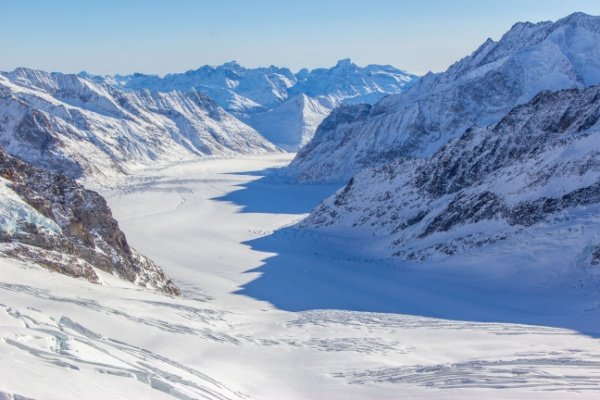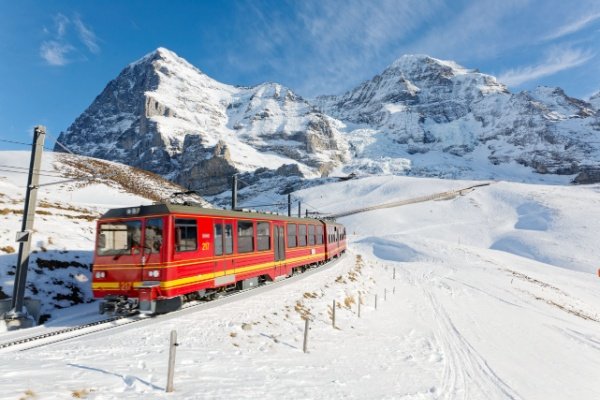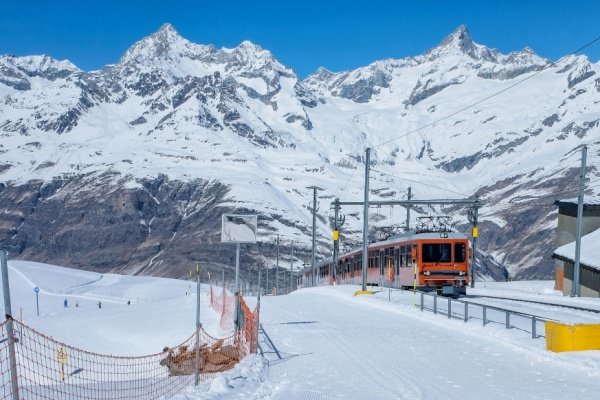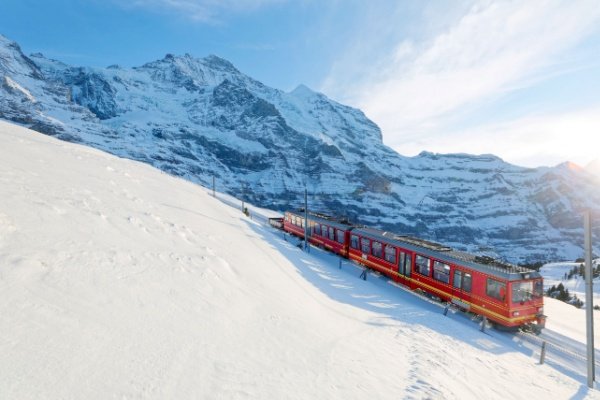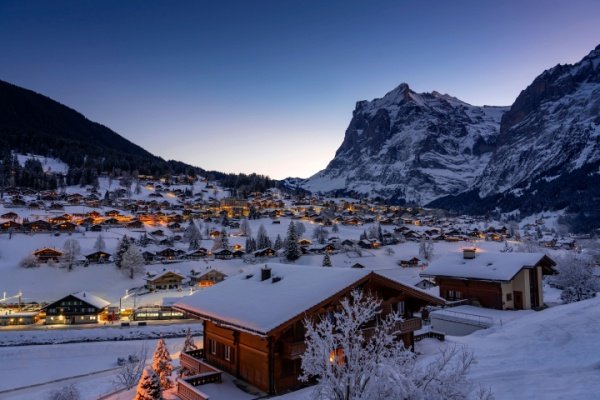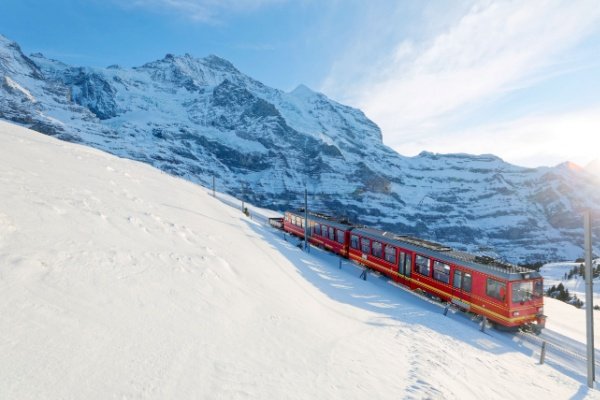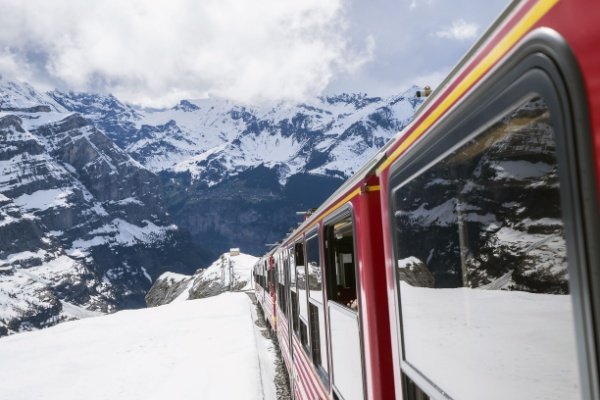Jungfraujoch Railway: History and Facts
Jungfraujoch Railway: History and Facts
Emerging from the heart of the Swiss Alps, Jungfraujoch “Top of Europe”, invites travelers with its awe-inspiring alpine panorama and thrilling experiences. Ascend to an elevation of 3,454 meters (11,332 feet) aboard the Jungfrau railway, a remarkable engineering feat navigating the challenging landscapes of the Eiger and Mönch mountains.
Explore this page to delve into intriguing facts and the rich history of the Jungfraujoch railway, uncovering the engineering triumphs that breathed life into this extraordinary railway journey.
Quick Facts about the Jungfraujoch Railway
- Address: Jungfraujoch “Top of Europe”, 3800 Grindelwald, Switzerland
- Altitude: 3,454 meters (11,332 feet)
- Total Area: Approximately 1 km² (0.4 square miles or 10,8 square feet)
- UNESCO World Heritage Site since: 2007
- Special Events: Concerts, fireworks, displays, and ski races.
- Number of Visitors per Year: Jungfraujoch “Top of Europe” is visited by over a million visitors per year, making it one of the most popular tourist destinations in Switzerland.
Fun Facts about the Jungfraujoch Railway
Unveil the captivating facets of Jungfraujoch and its railway with these fascinating fun facts:
Jungfraujoch Railway
Built between 1896 and 1912, the Jungfraujoch railway (Jungfraubahn) is the only cogwheel railway in Switzerland to use three different rack systems.
It doesn’t get any higher!
With an altitude of 3,454 meters (11,332 feet), Jungfraujoch “Top of Europe” is the highest railway station in Europe.
Sphinx Observatory
Conducting a wide range of scientific research into various aspects of the atmosphere, the Sphinx Observatory is the highest permanently manned research station in Europe.
Average Temperature
-7,9 degrees Celsius = 17,8 degrees Fahrenheit
Highest Windspeed
267,5 km/h (166,2 miles/h)
Chronological Timeline of the Jungfraujoch Railway
19th Century
1811: Johann Rudolf Meyer, a Swiss engineer, proposes the idea of building a railway to the Jungfrau summit. His proposal is met with skepticism, but it lays the groundwork for future developments.
1862: The first railway line in the Jungfrau region is built, connecting Kleine Scheidegg to Kleine Männlichen. This line provides access to higher altitudes and opens up new possibilities for tourism.
1890s: Adolf Guyer-Zeller, a Swiss industrialist, revives the idea of building a railway to the Jungfrau summit. He forms the Jungfrau Railway Company and begins construction in 1896.
20th Century
1898: The Jungfrau Railway reaches the Eiger Glacier, a major milestone in construction.
1908: The Jungfrau Railway reaches Eigerwandstation, a station located inside the Eiger mountain.
1912: The Jungfrau Railway is finally completed, and the first train reaches the Jungfraujoch summit. The journey takes about 90 minutes and ascends an altitude of 1,958 meters (6,427 feet).
1924: The Jungfraujoch railway is electrified, replacing the original steam locomotives.
1931: The Sphinx Observatory is built on the Jungfraujoch summit, becoming the highest research station in Europe.
1950s: The Jungfraujoch railway undergoes a major modernization, including the installation of new trains and tracks.
1960s: Jungfraujoch becomes a popular destination for winter sports, particularly skiing and snowboarding.
1970s: Tourism to Jungfraujoch continues to grow, and the railway sets new records for annual passengers.
1980s: Environmental concerns are raised about the impact of tourism on Jungfraujoch. Measures are taken to reduce the environmental footprint of the railway and the summit facilities.
21st Century
2007: The Jungfraujoch railway is recognized as a UNESCO World Heritage Site, along with other railways in the Swiss Alps.
2012: The Jungfrau Railway celebrates its 100th anniversary with a series of events and celebrations.
2016: The Jungfraujoch railway undergoes another major modernization, including the installation of new trains and the renovation of the summit stations.
2019: Jungfraujoch sets a new record for annual visitors, with over 1.2 million visitors in one year.
Today
Jungfraujoch “Top of Europe” continues to be a popular destination for tourists from all over the world. The railway is committed to sustainability and environmental protection, and it is also working to develop new and innovative experiences for visitors.
History of the Jungfraujoch Railway
Learn about the fascinating history of the Jungfraujoch railway, as our thoughtfully curated chronicle guides you through its intricate past.
Jungfraujoch “Top of Europe” Tickets
Discover our carefully curated selection of tickets and guided tours for Jungfraujoch, famously known as the “Top of Europe.” Ensure a more engaging and immersive experience as you navigate through this historically significant and visually stunning destination.

